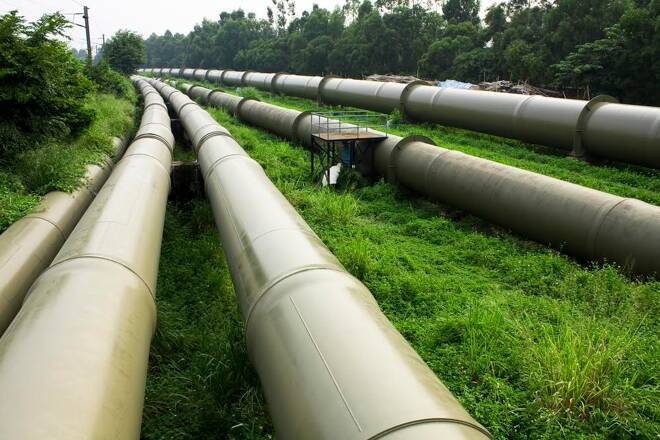Advertisement
Advertisement
Natural Gas Price Fundamental Daily Forecast – Expectations of Higher Export Demand, Possible Heat Supportive
By:
The weather guys put heat back into the forecast, and demand for feed gas was up. These are short-term bullish factors.
A shift in the short-term forecast over the weekend was all it took to revive the sluggish natural gas market on Monday. The news that heat was being put back into the forecast helped offset the generally bearish tone created by worries that Hurricane Isaias would bring in cooler temperatures throughout the Midwest and East Coast.
At 14:30 GMT, September natural gas is trading $2.008, up $0.209 or +11.62%.
NatGasWeather wrote Monday morning, “The weekend weather data was only slightly changed in most models except for the European model, which gained a hefty amount of demand. In fact, the European model was cooler than the rest of the data by nearly 10 CDD’s at Friday’s close, then trended notably hotter over the weekend to now nearly 10 CDD’s hotter than the rest of the data.”
“The natural gas markets are clearly hoping the hotter European model is correct with prices up more than 20 cents this morning. Although, prices were likely aided by LNG/feedgas/exports increasing to 4 Bcf over the weekend to tighten the balance. The European model has been running too hot in most instances this summer, so there risk if it loses some demand to line up better with the rest of the data.”
Additionally, Natural Gas Intelligence (NGI) reported that liquefied natural gas (LNG) feed gas demand jumped higher over the weekend, with Genscape Inc.’s estimate showing a 740 MMcf/d day/day increase on Saturday.
“Recently, a Bloomberg survey of traders found that up to 45 cargo cancellations are expected for the month of August, down from roughly 50 for the month prior,” Genscape analyst Preston Fussee-Durham said.
The largest increase in feed gas inventories occurred at Cheniere Energy Inc.’s Sabine Pass terminal, with volumes to the facility climbing nearly 580 MMcf/d, according to Genscape estimates.
“Effective for today’s gas day (based on timely cycle nominations), feed gas demand from interstate pipelines stands at 3.85 Bcf/d – 0.68 Bcf/d more than July’s average of 3.17 Bcf/d,” Fussee-Durham said.
Daily Forecast
Bullish traders are responding to the news without hesitation. They really had no choice, the weather guys put heat back into the forecast, and demand for feed gas was up. These are short-term bullish factors.
Although there is no significant resistance until $2.499, there is room to rally into a 50% to 61.8% resistance zone at $2.041 to $2.149. Sellers could return on a move into this area.
The return of hot weather and firmer demand for LNG may not have that much of an impact on nearby natural gas futures, but it means a lot to deferred traders who want to see storage supply fall head of the winter demand season.
For a look at all of today’s economic events, check out our economic calendar.
About the Author
James Hyerczykauthor
James Hyerczyk is a U.S. based seasoned technical analyst and educator with over 40 years of experience in market analysis and trading, specializing in chart patterns and price movement. He is the author of two books on technical analysis and has a background in both futures and stock markets.
Did you find this article useful?
Latest news and analysis
Advertisement
